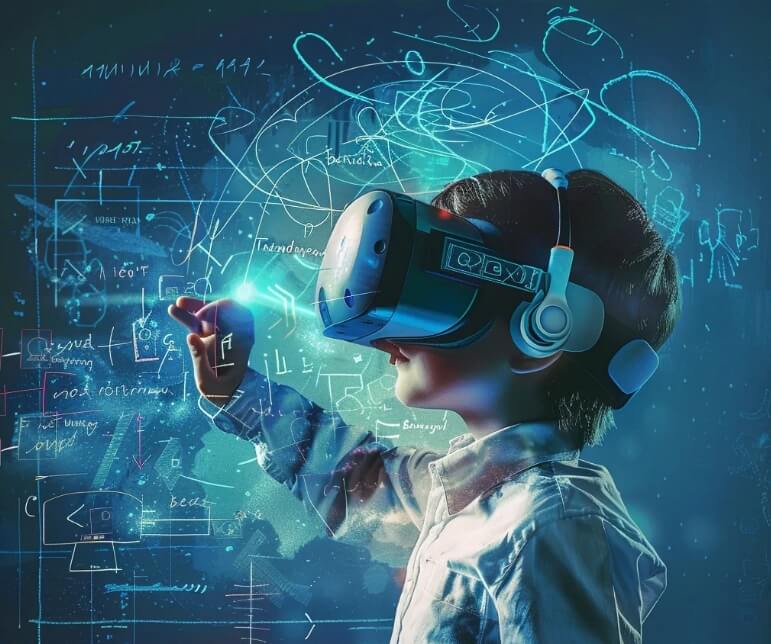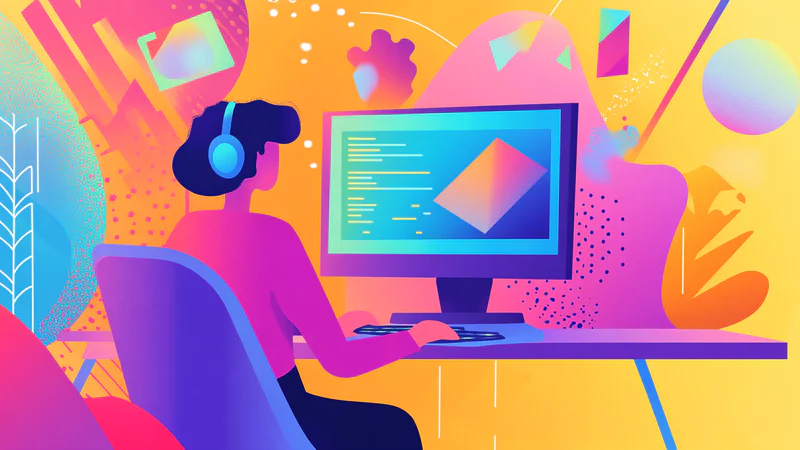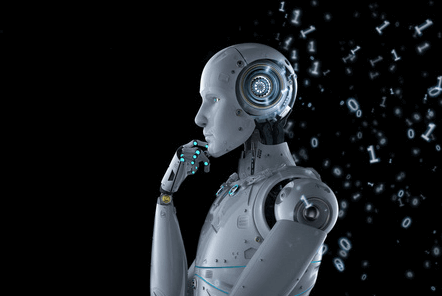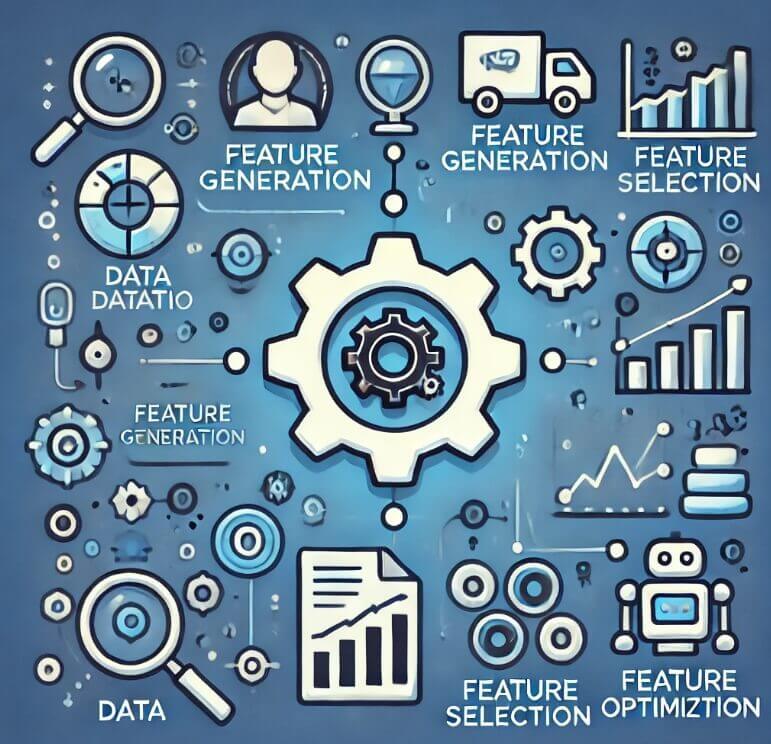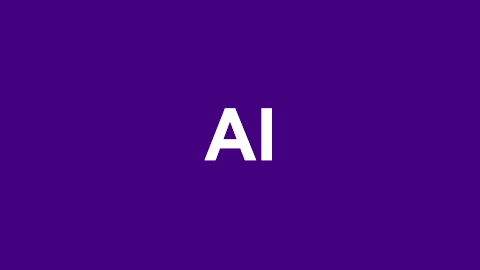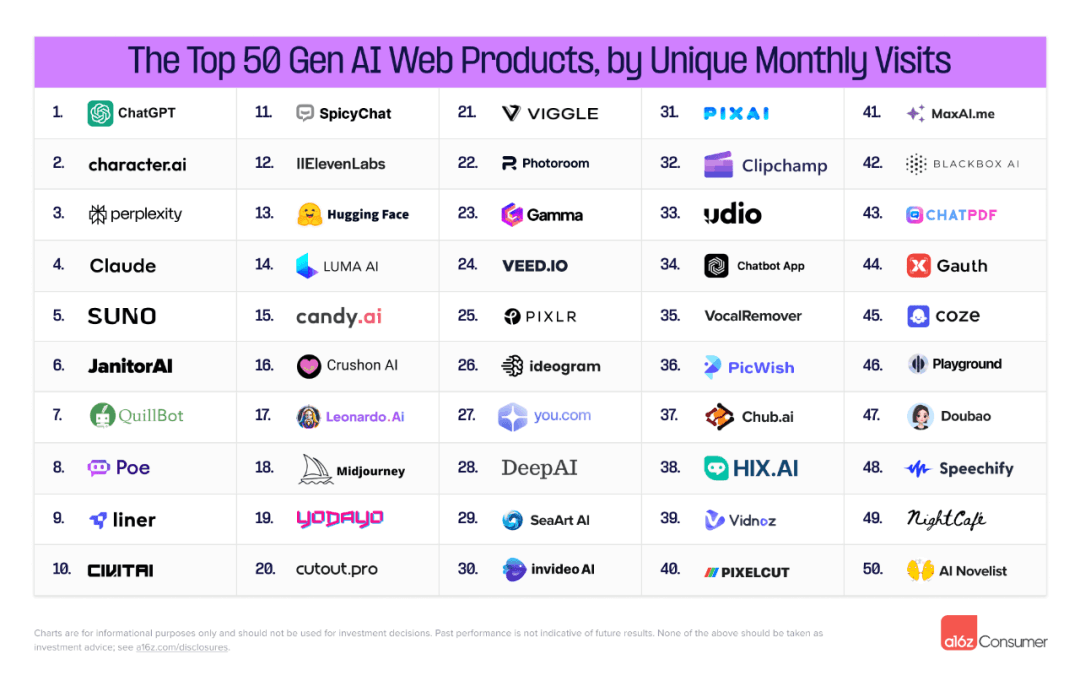1. Overview of AIGC
AIGC, which stands for Artificial Intelligence Generated Content, refers to a new emerging artificial intelligence technology. Its core idea is to use AI models to automatically generate various types of content such as text, images, audio, and video based on given themes, keywords, formats, styles, and other conditions.
1.1 Definition and Background
AIGC, or Artificial Intelligence Generated Content, is an important branch of AI, marking the transition from AI 1.0 to AI 2.0. It is based on the accumulation and integration of technologies such as GANs (Generative Adversarial Networks), CLIP, Transformers, Diffusion, pre-trained models, multimodal technologies, and generative algorithms, which endow AIGC with powerful content generation capabilities. By learning from vast amounts of data, AIGC enables AI to gain knowledge across multiple fields, completing real-world tasks. This is a milestone for both human society and AI.
1.2 Principles of AIGC
The principles of AIGC mainly rely on artificial intelligence technologies, especially "Natural Language Processing," "Machine Learning," and "Deep Learning." By analyzing, learning, and simulating vast amounts of linguistic data, AIGC can understand and generate natural language, thus creating new content.
AIGC technology can be categorized into two main types:
Rule-based AIGC Technology: This uses expert systems and knowledge bases within AI technologies, writing a series of rules to generate content. The advantage of this technology is that the generated content is more accurate, but it is costly, as it requires substantial human effort and time to write rules.
Machine Learning-based AIGC Technology: This employs machine learning and deep learning algorithms within AI technologies. It learns and simulates vast amounts of language data to enable AI to create new understanding and content. The advantage of this technology is that the generated content is more natural and fluent, but it requires a large amount of data and computational resources.
1.3 Application Scenarios of AIGC
AIGC technology demonstrates powerful capabilities in various fields, including but not limited to:
Text Generation: Such as news reports, blog posts, novels, conversations, etc.
Audio Generation: Such as music, sound effects, speech synthesis, etc.
Image Generation: Such as art, illustrations, image restoration, etc.
Video Generation: Such as short videos, animations, virtual scenes, etc.
Cross-modal Generation: Such as generating corresponding images or video content based on text descriptions.
Strategy Generation: In the gaming field, generating intelligent enemy action strategies, etc.
Virtual Human Generation: Including the appearance, personality, and dialogues of virtual characters.
1.4 Significance of AIGC
AIGC will revolutionize the entire content industry, significantly increasing productivity in producing text, images, videos, animation, etc., and improving content production efficiency. In the future, a large amount of high-quality content will be produced or assisted by artificial intelligence. At the same time, the development of AIGC must also address ethical and legal issues, ensuring that its applications are lawful, responsible, and beneficial.
1.5 Technical Characteristics
Autonomous Learning Ability: AIGC technology has autonomous learning capabilities, enabling it to automatically adjust and optimize algorithms based on data and experience, thereby improving performance and results.
Data-driven and Highly Automated: AIGC technology relies on large amounts of data for learning and prediction. By analyzing and processing the data, useful information and patterns can be extracted to achieve high automation.
Multimodal Content Generation: AIGC can generate content across various modalities, including text, images, audio, video, 3D models, etc., providing new ways of creation and experiences across industries.
1.6 Application Scenarios
AIGC can play a creative and innovative role in different fields and applications. Here are its major application scenarios:
Text Generation: Generating creative texts, stories, press releases, poetry, etc., based on a given topic or content.
Image Generation: Creating high-quality, unique image works, including paintings, illustrations, designs, artworks, etc.
Audio Generation: Creating music, songs, sound effects, or other audio content, providing novel and diverse music experiences.
Video Generation: Producing films, animations, short videos, etc., with professional-level visual effects and storytelling.
Game Generation: Generating game levels, characters, items, storylines, etc., bringing innovation and diversity to the gaming industry.
Digital Human Generation: Generating virtual characters, faces, and role models for film production, game design, and other fields.
Code Generation: Assisting in generating code snippets, programs, algorithms, etc., offering innovative solutions and programming ideas to developers.
1.7 Development Trends
Promoting the Transformation and Upgrade of the Cultural and Entertainment Industry: With the development of AI technology in areas such as text, sound, images, and video, AIGC will play a crucial role in creation, editing, distribution, and even marketing, greatly promoting the transformation and upgrade of the cultural and entertainment industry.
Complementary Open Source and Closed Source Products: The interaction between open-source and closed-source products has become increasingly significant, forming a virtuous cycle and jointly promoting innovation and expansion in the entire AIGC field.
2. AIGC's Underlying Technologies
2.1 Natural Language Processing (NLP)
Technological Principles: This section introduces the basic concepts and core technologies of NLP, such as lexical analysis, syntactic analysis, and semantic understanding.
Application in AIGC: Explains the application of NLP technologies in text generation, dialogue systems, etc.
Technological Description: NLP is the key technology in AIGC for text generation and understanding. It includes multiple aspects such as language models, lexical analysis, syntactic analysis, and semantic understanding. For example, pre-trained models like BERT and GPT can learn unsupervised from large-scale text data to understand the underlying rules of language and generate coherent text.
Example Code (Python, using NLP libraries like NLTK or Transformers)
# Example: Using the Transformers library for text generation
from transformers import GPT2LMHeadModel, GPT2Tokenizer
tokenizer = GPT2Tokenizer.from_pretrained('gpt2-medium')
model = GPT2LMHeadModel.from_pretrained('gpt2-medium')
input_text = "Hello, my name is"
input_ids = tokenizer.encode(input_text, return_tensors='pt')
# Generate text
output = model.generate(input_ids, max_length=50, num_beams=5, early_stopping=True)
generated_text = tokenizer.decode(output[0], skip_special_tokens=True)
print(generated_text)Conceptual Example Code (GPT-3-based)
# Note: GPT-3 models are typically provided as an API service. Below is a conceptual example. # Assuming a GPT-3 API interface def generate_text_with_gpt3(prompt, api_key, model_name="text-davinci-003"): # Actual API call should be here, but for simplicity, we simulate this process. # 'prompt' is the input text, 'api_key' is the API key, and 'model_name' is the model name response = "This is a sample response generated by GPT-3 based on the prompt." return response prompt = "In the future, AI will be able to..." response = generate_text_with_gpt3(prompt, "<your_api_key>") print(response)
2.2 Deep Learning Technology
Technical Principles: Introduces the basic concepts of deep learning, such as neural networks, Convolutional Neural Networks (CNN), Recurrent Neural Networks (RNN), and Generative Adversarial Networks (GAN).
Applications in AIGC: Analyzes the specific applications of deep learning in image generation, audio generation, video generation, and other fields.
Example Code (Python, using deep learning frameworks like TensorFlow or PyTorch):
#Example: Image generation with PyTorch and GAN #Assume there is a pre-trained GAN model #Load the pre-trained model (this part of the code is hypothetical, the specific implementation depends on the actual model) #model = load_pretrained_gan_model() #Generate random noise import torch z = torch.randn(1, 64, 1, 1) #Assume the input noise dimension of GAN is 64x1x1 #Generate images using GAN with torch.no_grad(): fake_images = model(z) #Assume there is a function that can convert the model output to an image and display it #display_images(fake_images)
2.3 Generative Adversarial Networks (GANs)
Technical Description: GANs consist of two neural networks, a generator and a discriminator, which compete with each other to generate high-quality content. In the field of image generation, GANs are particularly widely applied.
Code Example (Simplified GAN Model Based on PyTorch):
import torch import torch.nn as nn import torch.optim as optim # Assume a simple GAN architecture class Generator(nn.Module): # ... Define the generator network structure ... pass class Discriminator(nn.Module): # ... Define the discriminator network structure ... pass # Initialize the networks generator = Generator() discriminator = Discriminator() # Define optimizers and loss function optimizer_G = optim.Adam(generator.parameters(), lr=0.0002) optimizer_D = optim.Adam(discriminator.parameters(), lr=0.0002) criterion = nn.BCELoss() # Training loop (details omitted) # ... # Note: The above code is a simplified example of a GAN architecture. A complete GAN implementation would involve more details and complex training processes.
2.4 Variational Autoencoder (VAE)
Technical Description: VAE generates new data by learning the latent representation of data. It excels in generating images, audio, and other multimedia content.
Code Example (Simplified VAE Model Based on PyTorch):
Due to the complexity of VAE implementation, only a simplified model definition is provided:
class VAE(nn.Module): def __init__(self): super(VAE, self).__init__() # ... Define the encoder and decoder network structures ... pass def encode(self, x): # ... Encoding process ... pass def decode(self, z): # ... Decoding process ... pass def forward(self, x): # ... Forward propagation process, including encoding and decoding ... pass # Initialize VAE model vae = VAE() # ... Training code for the VAE model will involve optimization of reconstruction loss and KL divergence ...
2.5 Deep Learning Frameworks
Technical Description: Deep learning frameworks like TensorFlow and PyTorch provide the infrastructure to build and train complex models. These frameworks enable researchers to efficiently implement and test various AIGC algorithms.
Note: Since deep learning frameworks are not directly part of the underlying technology of AIGC, but are tools for implementing these technologies, there are no direct code examples here. However, the previous examples for NLP and GANs were written using the PyTorch framework.
2.6 Other Related Technologies
Cross-modal Generation Technology: Introduces how to associate and transform data from different modalities (e.g., text and images).
Reinforcement Learning: Explains how reinforcement learning can be applied in AIGC to optimize the quality and efficiency of generated content.
3. AIGC Challenges and Prospects
The challenges and prospects of AIGC (Artificial Intelligence Generated Content) can be analyzed and discussed from several aspects. Here is a detailed analysis of its challenges and future:
3.1 Challenges of AIGC
Technical Challenges:
Data Volume and Diversity: AIGC technology requires handling massive amounts of diverse data, including text, images, audio, and video. This demands storage systems capable of supporting various protocols to interface smoothly with different data sources.
High-Performance Storage Requirements: As model parameters scale up, the need for high-performance storage systems grows. Fast and reliable data access is essential in critical stages such as data collection, cleaning, model training, and inference.
Multimodal Technology: While investment in multimodal technologies is growing, effectively integrating information from different modalities to achieve more intelligent and natural interactions remains a challenge.
Commercialization Challenges:
Market Acceptance: Despite the convenience AIGC offers, there are doubts regarding the authenticity and credibility of the generated content, which affects its market acceptance.
Business Model Exploration: AIGC has potential applications across various industries, but finding the right business model to monetize it remains an area that requires exploration.
Legal and Ethical Challenges:
Copyright Issues: Content generated by AIGC involves copyright concerns. Ensuring the legality of generated content and avoiding infringement is a pressing issue.
Ethical Issues: As AIGC technology develops, its generated content may raise ethical concerns, such as the spread of false information, privacy breaches, etc.
3.2 Prospects of AIGC
Technological Prospects:
Continuous Technological Advancement: With the ongoing development of deep learning, big data, and other technologies, AIGC will continue to evolve. The generated content will become more realistic, natural, and diverse.
Multimodal Technology Integration: The integration of multimodal technologies will allow AIGC to handle more complex and diverse information, enabling smarter and more natural interactions.
Commercialization Prospects:
Expanded Application Scenarios: AIGC technology will be widely applied across advertising, gaming, media, education, e-commerce, and many other fields, driving industry growth.
Business Model Innovation: With the proliferation of AIGC technology, new business models and innovative applications will emerge, creating new growth opportunities for businesses.
Social and Cultural Impact:
Improved Productivity: AIGC will enhance content creation efficiency and quality, reduce production costs, and drive digital transformation across industries.
Enriched Cultural Content: AIGC will generate more diverse and personalized content, enriching people's cultural and entertainment experiences.
4. Will AIGC Replace Many Jobs?
This is an interesting question. The development of AIGC (Artificial Intelligence Generated Content) technology could indeed impact certain professions and job positions, but whether it will completely replace many jobs is a complex issue that requires careful consideration.
Firstly, AIGC technology can significantly improve efficiency and reduce manual labor in specific fields such as text creation, image processing, data analysis, and forecasting. This may lead to a decrease in the demand for certain traditional, repetitive job roles. However, such replacements are often accompanied by the creation of new job opportunities, such as the need for professional AIGC developers, maintainers, and managers.
Secondly, although AIGC technology is powerful, it cannot fully replace humans in certain fields. For example, in areas requiring high creativity and critical thinking, such as art, literature, and scientific research, human intelligence and imagination remain irreplaceable. Furthermore, AIGC technology also has limitations in handling complex interpersonal relationships and emotional communication, areas that still require human involvement.
Additionally, the development of AIGC technology will create a range of new job opportunities. As the technology becomes more widespread, more people will be needed to develop, optimize, and manage these technologies, and new fields and industries related to AIGC will emerge.
Finally, we must also consider the impact of social, economic, and cultural factors on AIGC technology. The development of technology should serve the welfare of humanity, not simply replace human roles. Therefore, we need to establish reasonable policies and measures to balance technological advancement and job demands, ensuring social stability and prosperity.

